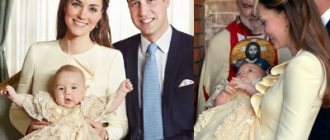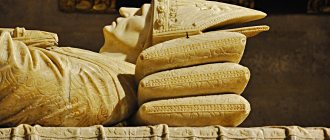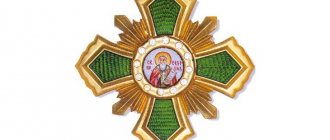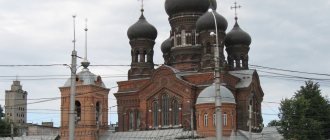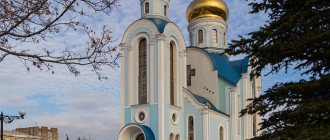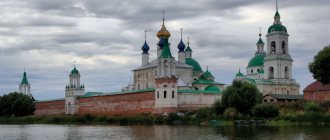Sewing is a traditional activity in monasteries. According to Church tradition, the Mother of God herself was a skilled seamstress, so it is not surprising that the monks loved this craft so much. Our monastery is no exception. One of the first workshops that appeared in the Vvedensky Monastery was a sewing workshop. The monastic family grew quickly, the sisters needed monastic clothes, so seamstresses needed to sew not only for church needs, but also for everyday needs. When there were more priests in the monastery, the sisters began to sew liturgical clothes. Now, 24 years after the founding of the monastery, three sewing workshops have been established in the monastery. The first workshop, the sacristy, is engaged in sewing priestly vestments: phelonions, vestments, stoles, armbands, belts, clubs, legguards, as well as church vestments for the throne and altar. Bookmarks for liturgical books and bags for prosphora are made. In the second workshop, the sewing sisters, they make monastic clothes: they sew robes, hair shirts, cassocks, cassocks, belts, kamilavkas, apostolic shirts, and scarves. Priestly robes and cassocks are also made here. In the embroidery workshop they embroider paramanas, bookmarks, and airs. Lent, according to tradition, is the time for monastic tonsure. For the sisters who are obedient in the sewing workshop, this is the “hottest time.” Not surprising, because for each tonsured sister it is necessary to prepare a full set of vestments, from shoes to a cross and rosary. All parts of the monastic vestment have their own symbolism; in fact, the clothing of a monk is the clothing of a warrior, a warrior of Christ; like a warrior going to the battlefield, each monk receives a kind of armor that will help him protect himself from the arrows of an invisible enemy. People often ask: why are monastic robes black? To this the holy fathers answer this way: “The most sacred image of a monk... is also called the garment of repentance, as (a way of life) mournful, humble and self-deprecating, not tolerating excesses and alien to any human passion, not only not being carried away by any worldly thoughts, words, and deeds , but also renouncing and fleeing from worldly worries... That is why the monk’s clothes are dark, because he remembers death and eternal mourning, he does not live this life, but longs for another - an imperishable life, to which he strives intensely" (St. Simeon Thessalonian). There is also this explanation for the black color of monastic robes: black color is the absence of color as such, a color outside the color spectrum, outside passion; monks, “monks”, who have left everything in this world, including color, strive for peace in God. In the rite of monastic tonsure, every detail of the monastic vestment is described as a detail of military vestments, as the clothing of timeless life and at the same time, as the clothing of one struggling on the path of spiritual achievement. First, the person being tonsured is dressed in a hair shirt - “clothing of voluntary poverty, non-acquisitiveness and patience of all sorrows and oppression” - a long undershirt made of coarse linen or a tunic. In ancient times, the hair shirt was made entirely of coarse camel hair and, when put on, caused pain to the monk, reminding him of the need to bear sorrows without complaint. A paraman is put on the hair shirt - a quadrangular cloth with a cross and an image of the instruments of the Savior’s suffering “in betrothal to the angelic image, for the constant memory of taking upon oneself the good yoke of Christ, of bearing His light burden and for curbing and binding all carnal lusts /.../ for constant memory about the suffering, humiliation, spitting, reproach, wounds, strangulation, crucifixion and death of the Lord God and our Savior Jesus Christ, which He voluntarily endured for our sake, so that we, to the best of our ability, might strive to imitate Him in this.”
Then comes the cassock - a long robe with sleeves - the clothing of not only a monk, monk, novice, but also any priest, including a married one (the latter’s cassock can be blue, gray, brown, white). Everyone wearing a cassock must be belted. The monk has a special belt: high, stitched several times, with ties at the side. Girdling has a special meaning - bridling the loins, mortifying the body, which is what is said in the rite of tonsure: “girds one’s loins with the power of truth for the mortification of the body and the renewal of the spirit and in constant observation of oneself.” According to the Venerable Abba Dorotheos, the belt is a symbol of readiness for spiritual work, for spiritual struggle - just as it was previously not customary to work “half-heartedly” without rolling them up, so it is also impossible to work and struggle without being belted. “The garment of spiritual joy and gladness, in order to reject and overcome all sorrows and temptations that befall through the action of demons, the flesh and the world, and always rejoice and be glad in Christ” is called a cassock in the rank of tonsure - a wraparound robe, expanding downward, with long sleeves, covering the tips of the fingers. The mantle - a long cape, a “cloak” with 40 folds on the back and a fastener at the collar - is called “the garment of salvation and the armor of righteousness, to evade all untruth and with all one’s strength to renounce the reasoning of one’s own mind and self-willed desires, in order to always think about death, to be crucified to the world, dead to every evil deed, and ever alive to every earnest service of Christ.” The mantle completely covers the monk’s body, both the cassock and the cassock are hidden under the mantle, and the length of the mantle itself can significantly exceed the height of the tonsured person up to 40 cm. The mantle fluttering behind the walking monk resembles the wings of an angel - one of the reasons that tonsure is called the vestment of “angelic image". The hood is called “the helmet of salvation and shameless hope,” and the apostle for nuns is “a veil of humility and constant obedience, as a sign of spiritual improvement, so as to avert one’s gaze and not see vanity.” Everyone who is tonsured puts on sandals “to be ready to preach the gospel of peace, to be zealous and diligent in all obedience and in every good work.” All monks receive a rosary, a cross and a candle; rosary - “spiritual sword”, “which is the word of God”, in order to constantly “abide in the Jesus Prayer, always have in your mind, heart and on your lips the name of the Lord Jesus Christ, constantly saying: “Lord Jesus Christ, Son of God, have mercy me a sinner"; “the shield of faith is the cross of Christ,” with which the “flaming arrows of the evil one” are extinguished according to the word of the Savior: “If anyone wants to come after Me, deny himself, take up his cross and follow Me” (Matthew 16:24); the candle is a reminder that “from now on, with your pure, virtuous life and good behavior, you must be a light for the world, as the Lord said: “So let your light shine before people, so that they see your good deeds and glorify your Father in Heaven.” (Matt. 5; 16). Those tonsured into the Great Schema are dressed in special schematic clothes - analav (an image of a cross placed crosswise on the shoulders of a monk, “to follow the Lord Christ, to always remember Her voluntarily endured suffering and death for us and to try diligently, as far as possible, to imitate Him”) and kukol (a pointed cap embroidered with crosses, similar to a child’s bonnet, is a symbol of children’s kindness: “a doll of kindness, a helmet of saving hope for remaining in silence, in spiritual contemplation and in careful attention to oneself”). video sketch
Deacon
This is the lowest rank of clergy. Deacons do not have the right to independently perform the sacraments and services, but they assist bishops or priests.
The vestments of the clergy-deacons conducting the service consist of a surplice, an orari and a bridle.
The surplice is a long garment that does not have slits at the back or front. A special hole was made for the head. The surplice has wide sleeves. This clothing is considered a symbol of the purity of the soul. Such vestments are not limited to deacons. The surplice can be worn by both psalm-readers and those laypeople who simply regularly serve in the church.
The orarion is presented in the form of a wide ribbon, usually made of the same fabric as the surplice. This robe is a symbol of God's grace, which the deacon received in the Sacrament. The orarion is worn on the left shoulder over the surplice. It can also be worn by hierodeacons, archdeacons and protodeacons.
The priest's vestments also include straps designed to tighten the sleeves of the surplice. They look like tapered sleeves. This attribute symbolizes the ropes that were wrapped around the hands of Jesus Christ when He was crucified on the cross. As a rule, the handrails are made of the same fabric as the surplice. They also depict crosses.
Cassock (cassock)
The cassock is a kind of surplice. It is believed that Jesus Christ wore a cassock and cassock. Such robes are a symbol of detachment from the world. The monks in the ancient church wore such almost beggarly clothes. Over time, it came into use among the entire clergy. A cassock is a long, toe-length men's dress with narrow sleeves. As a rule, its color is either white or yellow. The cassock of the bishop has special ribbons (gammata) with which the sleeves are tightened around the wrist. This symbolizes the streams of blood flowing from the perforated hands of the Savior. It is believed that it was in such a tunic that Christ always walked the earth.
From the history of monastic robes
Since ancient times, Christians have sought to express their devotion to God, among other things, through clothing. The first Christians wore modest clothes, alien to any luxury. Their attribute was pali
- a simple long cloak that hid the figure.
He was a symbol of humility. Tertullian (3rd century AD) testified that the pagans mocked the Christians, saying that they had exchanged the toga (honorable clothing) for the pali (contemptible clothing). Hieromartyr Cyprian of Carthage
wrote that Christians, especially those who dedicated themselves to God in the feat of virginity, should dress modestly, avoiding the slightest luxury and decoration.
With the formation of the institution of monasticism, specially monastic robes began to appear. Initially, they were very simple and practical: for example, you could wrap yourself in a monastic cloak while sleeping, and often it made up the only bed for hermits. Over time, the symbolic meaning began to prevail over the practical.
Stole
Epitrachelion is a long ribbon that is wrapped around the neck. Both ends should go down. This is a symbol of double grace, which is provided to the priest for conducting divine services and sacred sacraments. The epitrachelion is worn over a cassock or cassock. This is a mandatory attribute, without which priests or bishops do not have the right to conduct sacred rites. Each stole should have seven crosses sewn on it. The order of arrangement of the crosses on the stole also has a certain meaning. On each half, which goes down, there are three crosses, which symbolize the number of sacraments performed by the priest. One is in the middle, that is, on the neck. This is a symbol that the bishop has given the priest the blessing to perform the sacrament. It also indicates that the minister has taken upon himself the burden of serving Christ. It can be noted that the vestments of a priest are not just clothes, but a whole symbolism. A belt is worn over the cassock and epitrachelion, which symbolizes the towel of Jesus Christ. He wore it on his belt and used it to wash the feet of his disciples at the Last Supper.
Orders of monastics
Novice (ca)
- a person living in a monastery, who has submitted to its rules, who has decided to become a monk, but has not yet been tonsured.
At initiation into novices, a special prayer is read. Novices wear a cassock with a belt, novices wear a cassock and a scarf tied on their forehead. Sometimes novices are blessed to wear a skufia, and novices are blessed to wear an apostle .
Rasophore novice
- the next degree of approach to monastic tonsure. The person on it wears a cassock, women wear an apostle, men wear a skufia. When initiating a ryassophore, a special prayer is read.
Enoch
- a person who has undergone the first - minor - tonsure. A hood with basting is added to the vestment. As a sign of renunciation of the world and abandonment of the former life, during monastic tonsure they are sometimes given a new name.
Monk
– full degree of monastic tonsure.
When tonsured into monasticism (minor schema, mantle), vows of chastity, obedience and non-covetousness are taken. As a rule, as a sign of birth into a new life, during monastic tonsure a new name is given (or when leaving the previous name, a new heavenly patron with the same name is given. That is, for example, in the world a woman was called Mary in honor of Equal-to-the-Apostles Mary Magdalene, and in monasticism St. Mary of Egypt became her patron. A paraman
with a paraman cross and
a mantle
are added to the vestments .
Schimonakh
- tonsure into the great schema is the maximum degree of renunciation from the world.
The person being tonsured has his name changed again. The great schema-monk is entrusted with a paraman with a polycross and an analav
, decorated with images of the Cross of the Lord and the instruments of the Savior’s suffering.
The hood is replaced by a cockle. Also, schemaniks wear a special skufia with
cherubs
embroidered on it .
Cassock
In some sources, the cassock is called a chasuble or phelonion. This is the priest's outerwear. The cassock looks like a long, wide dress without sleeves. It has a hole for the head and a large cutout in the front that almost reaches the waist. This allows the priest to move his hands freely while performing the sacrament. The mantles of the cassock are stiff and high. The upper edge at the back resembles a triangle or trapezoid, which is located above the priest's shoulders.
The cassock symbolizes the purple robe. It is also called the garment of truth. It is believed that it was worn by Christ. The clergyman wears a pectoral cross over his cassock.
The gaiter is a symbol of the spiritual sword. It is given to clergy for special zeal and long service. It is worn on the right thigh in the form of a ribbon thrown over the shoulder and freely falling down.
The priest also puts on a pectoral cross over the cassock.
Sakkos
This robe was worn in the ancient Jewish environment. At that time, sakkos was made from the coarsest material and was considered a garment worn in mourning, repentance and fasting. The sakkos looked like a piece of rough cloth with a cutout for the head, completely covering the front and back. The fabric is not sewn on the sides, the sleeves are wide but short. The epitrachelion and cassock are visible through the sakkos.
In the 15th century, sakkos were worn exclusively by metropolitans. Since the establishment of the patriarchate in Russia, patriarchs began to wear them. As for spiritual symbolism, this robe, just like the cassock, symbolizes the scarlet robe of Jesus Christ.
Clothes and life of nuns
Symbolism was of great importance in the Middle Ages. The clear structure of society: brotherhoods, social classes, required a clear distinction between themselves. The monks also belonged to this group, wanting to emphasize their belonging to one or another order. And the main difference, of course, was the clothes.
One of the vows, the vow of poverty, led monks to wear simple and even coarse clothing. They wore their worn and patched clothes with pride. As a consequence of the same vow, wool was forbidden to be dyed. After all, dyed fabric is misleading. Small details in clothing have their own meaning and are important signs of distinction. For example, a leather belt or rope instead.
The color of the clothes of black nuns symbolizes the colors of peace, lack of passion, vanity and renunciation of everything worldly. The clothing of Orthodox nuns is a symbol of repentance and sorrow.
The black dress of a nun is more suitable for those who cry for their souls than bright clothes. Thus, it turns out that the attire and style of the nuns are not accidental and that everything, even the smallest details, has its own meaning.
You can find out what modern clothing for Muslim women looks like from our other article: Dresses for Muslim women, what are they?
Mace
The vestment of a priest (bishop) is incomplete without a club. This is a board shaped like a diamond. It is hung at one corner on the left thigh on top of the sakkos. Just like the legguard, the club is considered a symbol of the spiritual sword. It is God's word that should always be on the minister's lips. This is a more significant attribute than the loincloth, since it also symbolizes a small piece of the towel that the Savior used to wash the feet of his disciples.
Until the end of the 16th century, in the Russian Orthodox Church, the club served only as an attribute of bishops. But from the 18th century it began to be given as a reward to archimandrites. The liturgical vestments of the bishop symbolize the seven sacraments performed.
Symbolism of monastic robes
According to the Regulations on Monastics of the Russian Orthodox Church, “monasticism is a special way of Christian life, which consists in completely dedicating oneself to serving God.”
Anyone who wants to devote himself to God in monasticism goes through several degrees of dedication, each of which corresponds to a special robe, and with each new degree the number of these attire increases: new ones are added to the existing ones. Monastic robe
is a sign of dedication, of self-denial to Christ, just as at a wedding crowns are placed on those entering into an earthly marriage.
Black
the color of the monastic robe symbolizes repentance, renunciation of the world, dying for everything worldly in order to come to life for God.
As a rule, monastics (except for schema monks) put on all their vestments only for divine services and on especially solemn occasions. Outside of the service, nuns and nuns wear a cassock, a belt and an apostolic plate, sometimes a skufia is added to them. Monks and monks wear a cassock, belt and skufya
.
Panagia and omophorion
An omophorion is a long ribbon of fabric decorated with crosses.
It is put on the shoulders so that one end goes down in front and the other at the back. A bishop cannot perform services without an omophorion. It is worn over the sakkos. Symbolically, the omophorion represents a sheep that has gone astray. The good shepherd brought her into the house in his arms. In a broad sense, this means the salvation of the entire human race by Jesus Christ. The bishop, dressed in an omophorion, personifies the Savior Shepherd, who saves the lost sheep and brings them in his arms to the house of the Lord.
A panagia is also worn over the sakkos.
This is a round icon framed with colored stones, depicting Jesus Christ or the Mother of God.
The eagle can also be considered a bishop's vestment. A rug on which an eagle is depicted is placed under the bishop’s feet during the service. Symbolically, the eagle says that the bishop must renounce earthly things and ascend to heavenly things. The bishop must stand on the eagle everywhere, thus always being on the eagle. In other words, the eagle constantly carries the bishop.
Also during divine services, bishops use a rod (staff), symbolizing the highest pastoral authority. The staff is also used by archimandrites. In this case, the staff indicates that they are abbots of monasteries.
So what do nuns wear?
First of all, they put on a hair shirt, also called a tunic. Initially, this was a long shirt with sleeves, which was woven from camel or sheep wool. They put it directly on the naked body and the coarse pile hurt painfully. Thereby serving as a constant reminder that it is necessary to uncomplainingly endure all life’s difficulties, troubles and sorrow. Currently this shirt is made of plain fabric.
Hair shirt or tunic
Next, the person undergoing tonsure is put on a paraman - this is a small square on which a cross and other instruments of the Savior’s suffering are depicted with the words of the Holy Apostle Paul. A simple wooden cross is worn with it.
Paraman
The cassock is put on next. This is the black nun dress (pictured).
Cassock - black dress of a nun
He is girded with a belt, symbolizing the nun’s readiness for ascetic deeds.
Next is the cassock; in monastic tonsure it is called the “robe of joy and joy.” The cassock marks the putting aside of sorrows arising from the sorrows and troubles that have befallen.
Cassock
She is put on the robe of “robes of salvation” or “robes of incorruptibility and purity,” as they are also called. The absence of sleeves on the mantle symbolizes the nun’s lack of hands for vain worldly affairs and sins.
The hood, called the helmet of salvation, is put on the person being tonsured. He also puts on sandals and at the end he is given a rosary.
You will find very feminine and romantic Chechen dresses, exquisite Arabic ones in our articles.
Hats
The headdress of a priest conducting a service is called a miter. In everyday life, clergy wear skufia.
The miter is decorated with multi-colored stones and images. This is a symbol of the crown of thorns placed on the head of Jesus Christ. The miter is considered to be an ornament on the priest's head. At the same time, it resembles the crown of thorns with which the Savior’s head was covered. Putting on a miter is a whole ritual during which a special prayer is read. It is read during the wedding. Therefore, the miter is a symbol of the golden crowns that are placed on the heads of the righteous in the Heavenly Kingdom, who are present at the moment of the union of the Savior with the Church.
Until 1987, the Russian Orthodox Church prohibited anyone except archbishops, metropolitans and patriarchs from wearing it. The Holy Synod at its meeting in 1987 allowed all bishops to wear the miter. In some churches it is permissible for subdeacons to wear it, decorated with a cross.
Miter comes in several varieties. One of them is the crown. Such a miter has a crown of 12 petals above the lower belt. Until the 8th century, this type of miter was worn by all clergy.
Kamilavka is a headdress in the form of a purple cylinder. Skufya is used for everyday wear. This headdress is worn regardless of degree and rank. It looks like a small round black hat that folds up easily. Its folds around the head form the sign of the cross.
Since 1797, the velvet skufia has been given to members of the clergy as a reward, just like the legguard.
The priest's headdress was also called a hood.
Black hoods were worn by monks and nuns. The hood looks like a cylinder, widened at the top. There are three wide ribbons attached to it that fall down the back. The hood symbolizes salvation through obedience. Hieromonks may also wear black hoods during services.
Apparel for everyday wear
Everyday vestments are also symbolic. The main ones are the cassock and cassock. Servants leading a monastic lifestyle must wear a black cassock. The rest can wear a cassock of brown, dark blue, gray or white. Cassocks can be made of linen, wool, cloth, satin, chesuchi, and sometimes silk.
Most often the cassock is made in black. Less common are white, cream, gray, brown and dark blue. The cassock and cassock may have a lining. In everyday life there are cassocks that resemble coats. They are complemented with velvet or fur on the collar. For winter, cassocks are sewn with a warm lining.
In a cassock, the priest must conduct all services, with the exception of the liturgy. During the liturgy and other special moments, when the Rule forces the clergyman to put on full liturgical attire, the priest takes it off. In this case, he puts a chasuble on the cassock. During the service, the deacon also wears a cassock, over which a surplice is worn. The bishop is obliged to wear various vestments on top of it. In exceptional cases, at some prayer services, the bishop may conduct the service in a cassock with a mantle, on which an epitrachelion is worn. Such priestly clothing is the obligatory basis of liturgical vestments.

